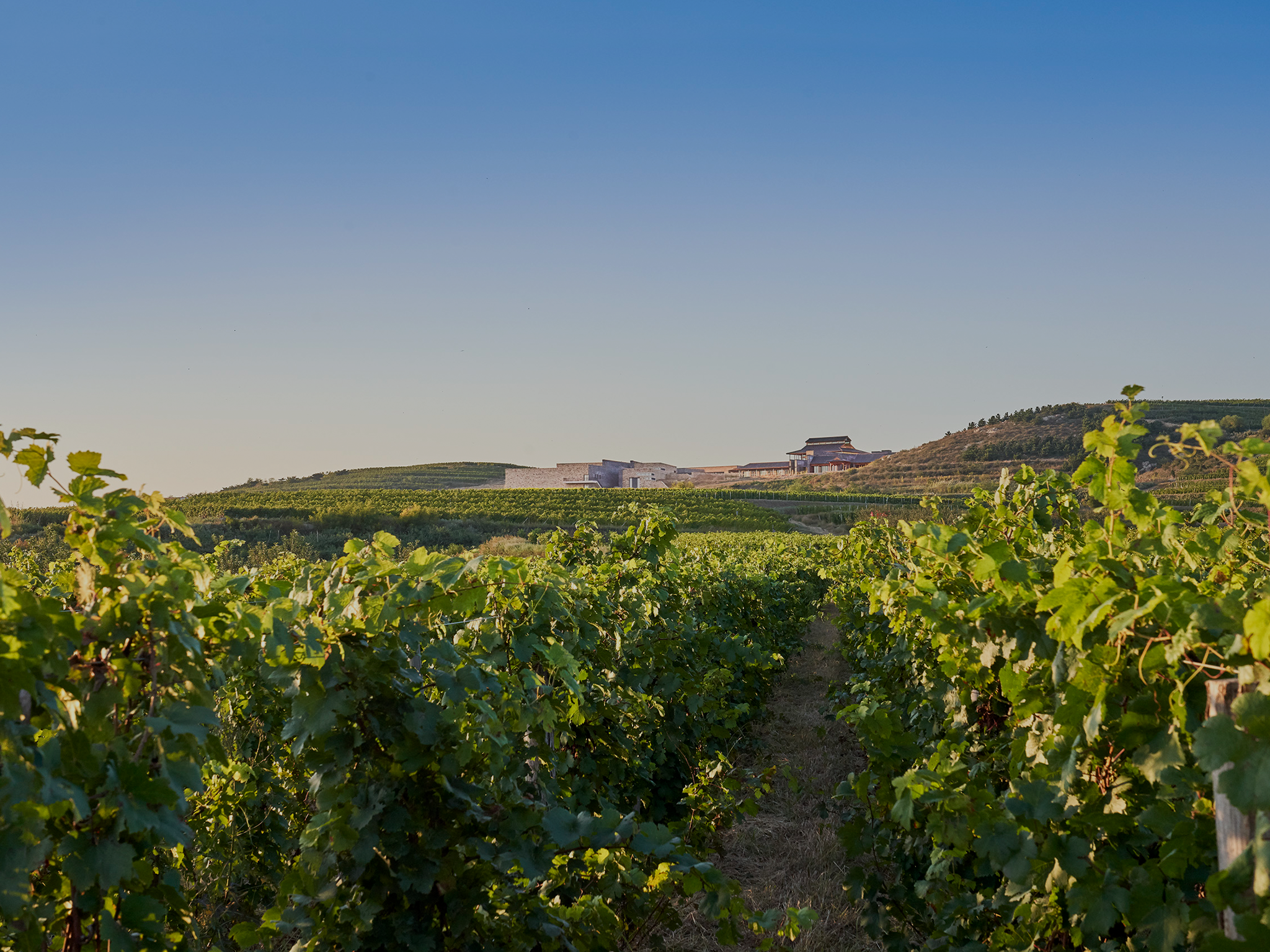Long Dai

The vintage
The 2019 vintage can be considered as an especially hot and dry vintage in the Shandong province, with a great richness in the wines. The season started with very low water reserves in the soil due to the dry Shandong winter, but some rainfalls in April and May allowed the vine to build its canopy. The flowering period in June was sunny, allowing a good fruit set and therefore, a good number of bunches per vine. The particularly dry summer period demanded efforts to the vineyard team to bring water to the plants in order to ensure maturation. Veraison happened early, starting in the end of July for the Merlot and ending with the Cabernet Sauvignon in the first week of August. The harvest started right after the launch of our first 2017 vintage, and was quite dense, meaning that the maturities all came up in a restricted period of time. The team meticulously followed the maturations with an intra-plot selection for a harvest at the optimum maturity according to technological and phenological parameters. The Syrah was first harvested on the 21st of September, and the last Cabernet Sauvignon was harvested on the 18th of October.
Location
Domaine de Long Dai is nestled at the heart of the Qiu Shan Valley in the Shandong Province in the North eastern part of China. The climate here is tempered by the influence of the Yellow Sea located a mere 20 km away. The region is highly dependent on agriculture and the milder winters combined with the granitic soils make it a place of interest to grow vines.
Terroir
The 34-ha vineyard is spread over 420 terraces, following the agricultural tradition in the region. This planting method respects both the landscape and the soil structure but also requires a lot of manual work as well as specially adapted machines. Everything has been organised to apply high-precision viticultural methods. Disbudding and green harvesting naturally reduce yields, allowing the grapes to reach full phenolic ripeness.
Winter in this region is dry and cold, but less severe than in other parts of the country. Building up soil around the feet of the vines is generally sufficient to ensure frost protection.
The summer is hot and includes a short period of rain in July and August, followed by two months of dry weather during the critical ripening period. The grapes do not ripen uniformly due to the terrace system, so the harvesting of each terrace is carried out in several passes to ensure that all grapes are picked at the optimum degree of ripeness.
Winemaking
This wine is produced using the traditional vinification methods for emblematic grape varieties such as Cabernet Sauvignon and Cabernet Franc. Controlled pumping over allows for gentle and respectful extraction of each cuvée to obtain a harmonious balance between tannic structure, roundness and length. This vintage, with its ripe fruit, allowed for maceration periods ranging from 20 to 24 days.
To maintain the harmony between richness and liveliness, Marselan, a grape variety originating in the Languedoc, is vinified in a gentler way, with the extraction facilitating a slow diffusion of aromatic and phenolic compounds. This makes it possible to improve the complexity and balance of our Bordeaux blend.
Following the malolactic fermentation, the first wine is blended after selection of the best tanks and then aged in oak barrels for 18 months. The combination of different proportions of new, one-year and two-year barrels is essential to enhance the final blend and reveal its full complexity.
Grapes
Tasting
The wine begins with a sweet nose of black cherry, raspberry and plum followed by a peppery spice and a cedar-scented bouquet. Its medium-bodied palate, after a generous attack, is embodied with a balanced structure and elegant fine grain tannins. Hints of black chocolate give a luscious feel to the finish.
Downloads

